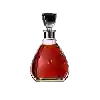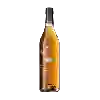
Domaine du Mas BlancBanyuls Hors d'Age Vieilli en Sostréra
This wine generally goes well with beef and mature and hard cheese.
Wine flavors and olphactive analysis
On the nose the Banyuls Hors d'Age Vieilli en Sostréra of Domaine du Mas Blanc in the region of Languedoc-Roussillon often reveals types of flavors of oak.
Food and wine pairings with Banyuls Hors d'Age Vieilli en Sostréra
Pairings that work perfectly with Banyuls Hors d'Age Vieilli en Sostréra
Original food and wine pairings with Banyuls Hors d'Age Vieilli en Sostréra
The Banyuls Hors d'Age Vieilli en Sostréra of Domaine du Mas Blanc matches generally quite well with dishes of beef or mature and hard cheese such as recipes of homemade beef stew or franco-comtois beef.
Details and technical informations about Domaine du Mas Blanc's Banyuls Hors d'Age Vieilli en Sostréra.
Discover the grape variety: Garonnet
Garonnet noir is a grape variety that originated in France. It is a variety resulting from a cross of the same species (interspecific hybridization). It produces a variety of grape specially used for wine making. It is rare to find this grape to eat on our tables. The Garonnet noir can be found in the vineyards of the Rhône Valley.
Informations about the Domaine du Mas Blanc
The Domaine du Mas Blanc is one of of the world's great estates. It offers 22 wines for sale in the of Banyuls to come and discover on site or to buy online.
The wine region of Banyuls
Banyuls wines come from the South-eastern Part of Roussillon, in the south of France, in the lower Pyrenees, a few kilometres from the Spanish border. These naturally Sweet wines are consumed both as an aperitif and as a dessert. They come in a wide range of hues, from GoldenGreen (Banyuls Blanc) to Amber (Banyuls Ambré) to the intense garnet of the standard Banyuls Rouge. Unusually among the natural sweet wines of France, all Banyuls wines are made primarily from Grenache grapes of various colors.
The wine region of Languedoc-Roussillon
Languedoc (formerly Coteaux du Languedoc) is a key appellation used in the Languedoc-Roussillon wine region of southern France. It covers Dry table wines of all three colors (red, white and rosé) from the entire region, but leaves Sweet and Sparkling wines to other more specialized appellations. About 75% of all Languedoc wines are red, with the remaining 25% split roughly down the middle between whites and rosés. The appellation covers most of the Languedoc region and almost a third of all the vineyards in France.
The word of the wine: Cup (size in)
Specific to the Mediterranean vineyard, this short pruning which opens the stock in the shape of a corolla offers a good resistance to violent winds but does not allow any mechanization of the vine work.














